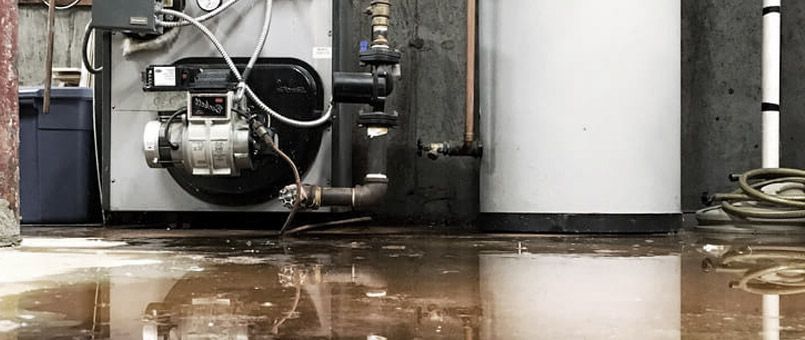How often should you clean your dryer vent to stop error messages?
This is a subtitle for your new post

How Often Should You Clean Your Dryer Vent to Stop Error Messages?
Clearing out lint buildup and keeping your dryer vent clean is crucial for efficient dryer performance and preventing potential fire hazards. Your dryer vent acts as an exhaust system, expelling hot air from the appliance to the outside during each cycle. Over time, lint inevitably accumulates within the vent line, restricting airflow and causing your dryer to work harder - a situation that could potentially lead to overheating or even dryer fires.
Regular dryer vent cleaning is the key to avoiding these issues and extending the lifespan of your dryer. But how often should you clean your dryer vent to stop error messages and ensure safe, efficient operation? In this guide, we'll explore the recommended frequency for dry vent cleaning, signs your vent needs attention, and the benefits of professional dryer vent cleaning service to keep your laundry routine running smoothly.
Potential Causes of Prolonged Drying Time
If you notice that your dryer is taking longer than usual to dry your clothes, it could be a sign of a clogged or blocked dryer vent. When the vent is obstructed, it reduces airflow, preventing your dryer from drying your clothes properly . You may not immediately realize this is occurring if you dry your clothing on the Sensor or Auto setting, as the dryer will automatically run longer cycles until the clothes are dry . However, this puts additional stress on your dryer and uses more energy.
Here are some potential results of reduced airflow due to a clogged dryer vent:
- Carbon monoxide back up (gas dryers only)
- Longer drying times
- Increased utility bills
- Higher operating temperatures
- Dryer component failures
- A shorter overall lifespan for your dryer
- A dryer fire hazard
Other signs that your dryer vent needs cleaning include [6]:
- It takes a longer time for the clothes to dry
- The clothes get hotter than usual after drying
- The outside of the dryer also gets hotter
- The exhaust vent flapper does not open frequently
- The laundry room is hotter than usual
- The laundry room gets a burnt odor
If you find yourself having to run two or three drying cycles for a normal-sized load of laundry to be dry, your dryer vent may be clogged with lint and debris. A clogged dryer vent makes your dryer function less efficiently and leaves your clothes damp. Additionally, moisture unable to escape your dryer can cause mold, mildew, and bacteria to develop, leaving your dryer and your clothes smelling not very fresh. These odors are not only unpleasant, but they also pose a health risk if you or your family members are sensitive to bacterial growths.
Checking for Blockages or Damage
One of the primary warning signs that your dryer vent needs attention is if your clothes take longer than the normal 35-40 minutes to dry. If you notice your dryer cycles extending beyond this timeframe, it could indicate a blockage or buildup within the vent system. When the vent is clogged, the hot, moist air becomes trapped inside the dryer, preventing your clothes from drying efficiently.
You may also notice other telltale signs of a clogged dryer vent, such as:
- Debris appearing around the outdoor dryer vent opening
- Excessive heat in the room where the dryer is running
- Lint and debris accumulating around the dryer's lint filter
If you suspect your dryer vent is blocked, there are a few simple tests you can perform:
Testing for Blockages
- Touch Test: While the dryer is running, place your hand on top of the unit. If the top feels excessively hot to the touch, it likely indicates restricted airflow and a blocked vent. The top should only feel warm, as the dryer is designed to expel hot air through the vent.
- Disconnect Test: Disconnect the dryer vent transition from the wall and run a load of clothes. If your clothes dry within the normal 35-55 minute timeframe, the issue lies with the vent rather than the dryer itself.
- Visual Inspection: Check for lint accumulation on the inside of the dryer door, which can signify a weakened suction caused by a blocked vent. Also, inspect the exterior vent hood for any obstructions from landscaping or debris.
If any of these tests indicate a blockage, it's crucial to have your dryer vent professionally cleaned. Clogged vents can cause your dryer to overwork, leading to potential component failures, increased energy consumption, and even fire hazards. Addressing the issue promptly can help extend the lifespan of your dryer and ensure safe, efficient operation.
Diagnosing Heating System Issues
If your dryer is not producing heat, it's essential to diagnose the root cause of the issue. Here are some steps you can take to troubleshoot and identify potential problems with the heating system:
- Check the Dryer Vent: A clogged or blocked dryer vent can restrict airflow, causing the dryer to overheat and shut off the heating element as a safety precaution. Inspect the vent for lint buildup or obstructions, and ensure the exterior vent flap opens and closes freely.
- Inspect the Lint Screen: A clogged lint screen can also impede airflow and prevent the dryer from heating properly. Clean the lint screen thoroughly and ensure it's not damaged or excessively worn.
- Test the Heating Element: The heating element is responsible for generating the heat required for drying your clothes. To test it, you'll need to access the heating element compartment and perform a continuity test using a multimeter. a. Unplug the dryer and locate the heating element.
b. Disconnect the wires from the heating element terminals.
c. Set your multimeter to the ohms or resistance setting.
d. Touch the multimeter probes to the heating element terminals.
e. If the multimeter shows continuity (a resistance reading), the heating element is likely functioning correctly. If it shows no continuity (infinite resistance), the heating element may be burned out and needs replacement. - Check the Thermostats: Most dryers have multiple thermostats that regulate the temperature and prevent overheating. These thermostats can fail over time, causing the heating system to malfunction.
a. Locate the thermostats, typically mounted near the heating element.
b. Disconnect the wires from the thermostat terminals.
c. Use your multimeter to test for continuity across the thermostat terminals.
d. If the thermostat shows no continuity, it may need to be replaced. - Inspect Electrical Connections: Loose or corroded electrical connections can prevent the heating system from receiving power. Check the wiring harness, connections, and fuses for any signs of damage or corrosion.
- Check the Gas Supply (for Gas Dryers): If you have a gas dryer, ensure that the gas supply line is properly connected and that the gas valve is open. A lack of gas can prevent the heating system from functioning correctly.
If you've gone through these steps and still cannot identify or resolve the issue, it may be time to seek professional assistance from a qualified appliance repair technician. They have the expertise and specialized tools to diagnose and repair complex heating system problems.
Remember, attempting to repair or replace components yourself can be dangerous if you're not familiar with the proper safety procedures. Call Vortex Air Duct Cleaning and Home Services for a free quote over the phone at (316) 272-6849 to schedule a professional dryer vent cleaning and inspection service.
Optimizing Dryer Load and Settings
Familiarizing yourself with your dryer settings and always selecting the most appropriate option for the job has a host of benefits:
- Reduced Energy Consumption: Your electrical bill could go down. Shorter drying cycles and lower temperatures mean less energy consumed, which is reflected in your monthly utility bill.
- Prolonged Appliance Life: It's easier on your dryer and its internal components, prolonging the life of your appliance.
- Color Preservation: Your brights will stay brighter if they're dried at an appropriate temperature. High heat settings can cause clothes to fade faster.
- Extended Clothing Lifespan: Overdrying causes cloth items to shrink and wear out faster. Using an appropriate temperature and cycle length will prolong the lifespan of your clothes and linens.
- Fewer Wrinkles and Static: Proper settings can minimize wrinkles and static buildup in your laundry.
To maximize efficiency, it's crucial to load your dryer correctly. Overfilling can lead to lengthier drying cycles, wrinkled clothes, stretched or damaged fabrics, and potential damage to the dryer itself. However, underfilling your dryer wastes energy. When doing laundry, aim for a full dryer load.
What constitutes a full load depends on your appliance's capacity, generally measured in weight. Consult your dryer's manual to check its capacity, which will likely detail whether it's low-, medium-, or high-capacity, and provide weight recommendations.
Here are some additional tips for optimizing your dryer load and settings:
- Don't Dry Too Little: Avoid running the dryer for a handful of clothing that doesn't reach minimum capacity. Each time you operate your dryer, it utilizes energy, and it's best to reserve it for sufficient loads. Consider waiting for the next load of laundry to run the dryer or hanging the few articles of clothing outside to air dry.
- Don't Dry Too Much: Just like you want to avoid drying too little, it's also important to avoid drying too much. It's important to dry in bulk, when possible, but avoid overloading your dryer to ensure the clothes tumble correctly. If the clothes in your dryer don't properly tumble, it prevents adequate air and heat circulation to dry them.
- Dry Loads Back-to-Back: There's a buffer period for your dryer to use energy and heat up after you turn it on. It's also common to wait a day or so between drying loads, but this requires more energy consumption from your dryer. Instead of waiting until the following day to dry your next load, consider drying it straight after the first one.
- Use Higher Spin Speeds: It requires more energy to start your dryer than to run your washer on a higher spin speed. The more water your washed clothing retains, the more energy a dryer requires to sufficiently distribute heat and air to dry them. Consider using the high-speed setting on your washer to remove excess moisture from clothes before transferring them to the dryer. This method also shortens the drying time and saves energy.
- Keep Clothes Untangled: It's common to separate clothing by color before doing laundry, but an additional separation process can help maximize the drying process. Clothes become knotted inside the washer, and this can cause the materials to retain excess moisture. Tangled clothing also increases the risk of damaging the material and requires more energy if you must run a second cycle. Take the time to detangle wet clothing from the washer before transferring it to the dryer to help the load dry evenly, avoid material damage, and reduce the overall drying time.
- Separate Light and Heavy: Clothing and other materials can vary in density based on the fabric type. Heavier items, like winter coats, take longer to dry than lightweight items like blouses or sheets. Drying light and heavy items together also places the lighter items at risk of over-drying, which can cause abrasion and damage to finer fabrics. Increase dryer efficiency by separating light and heavy materials from each other. For the same reason, it's important to separate items with buttons or zippers to avoid snagging other fabrics. Combining light and heavy items also increases the risk of uneven distribution of heat and air, which can leave the heavier items damp.
Call Vortex Air Duct Cleaning and Home Services for a free quote over the phone at (316) 272-6849
Conclusion
Maintaining a clean and efficient dryer vent is crucial for the safe operation of your dryer, extending its lifespan, and preventing potential fire hazards. By regularly inspecting your vent for blockages, cleaning out lint buildup, and addressing any heating system issues promptly, you can ensure your dryer operates at its best. Remember, a well-maintained dryer not only saves you time and energy but also protects your home and family.
If you need professional assistance with dryer vent cleaning or any other air duct cleaning services, call Vortex Air Duct Cleaning and Home Services for a free quote over the phone at (316) 272-6849. Their experienced technicians can help you keep your dryer and home in top condition, ensuring a safe and efficient laundry routine.











